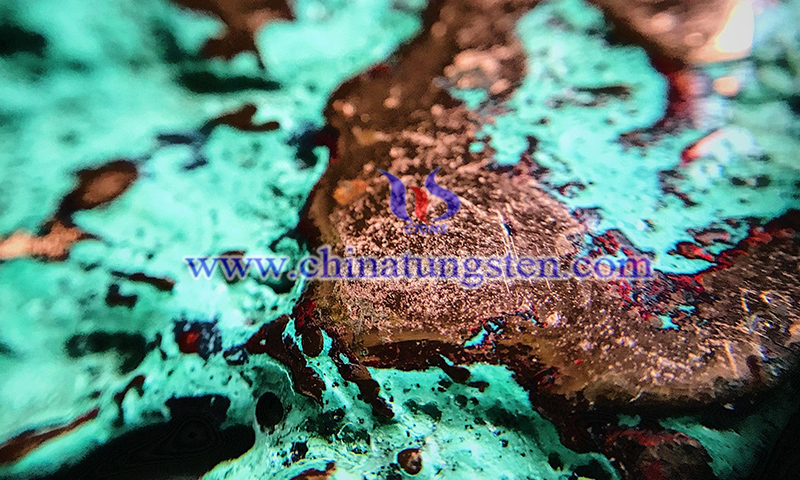Protein Sensor Helps to Extract Rare Earth Elements from Acid Mine Drainage
- Details
- Category: Tungsten's News
- Published on Sunday, 05 December 2021 19:20
A protein sensor developed by researchers that emits a green light when it encounters terbium, a rare earth element, could boost U.S. progress in mining rare earth elements in acid mine drainage.
The tool is the first luminescence-based sensor that can quantify terbium at very low levels in acidic, complex environmental samples. If commercialized, it could give explorers the ability to search for this economically valuable element in abandoned mine tailings.
Rare earth elements are an important component of wind turbines and electric vehicles. Technologies for mining low-grade rare earth resources, such as coal byproducts, power waste, and mine effluent.
Joseph Cotruvo, a chemist at Penn State, said, "It's really a fairly simple method, it's similar in sensitivity to the current state of the art, the tool is still being researched and developed, and it will perform as well as a highly accurate laboratory instrument, but it will be faster and easier to operate.
“If the protein sensor can be mass-produced or reused, it will significantly reduce the characteristic cost of domestic rare earth production, said Scott Crawford, a contractor at the National Energy Technology Laboratory (NETL) in Pittsburgh, who was not involved in the sensor's development. Increasing U.S. rare earth production is critical to the U.S. economy, environment, and national security,” he said.

Other researchers are also developing new ways to sense rare earths. Researchers from NETL have tested fiber-optic sensors in liquids, and scientists at Idaho National Laboratory are working on a sensor that uses luminescence detection.
The new sensor comes from a protein found in the bacterium Methylorubrum extorquens, which lives in soil, plants, and other environments. This sensor can be used as part of a device that alerts field technicians when terbium is present in acid mine drainage.
The protein lanmodulin can selectively detect terbium even when other rare earths or heavy metals are dissolved in the solution. The researchers used tryptophan, a photosensitizer that absorbs light more efficiently than terbium, to transfer energy to terbium to excite it. Terbium then emits light at several wavelengths, the most intense being green light at 545 nanometers. The more terbium present, the more intense the luminescence.
Terbium is one of the most valuable rare earths, and it is considered one of the five most economically critical," Crawford said, "This work represents a major advance in rare earth detection. The sensor must be ultra-selective, like finding the fabled needle in a haystack, binding specifically to rare earths, not to other elements in the sample." The team published its results in the Journal of the American Chemical Society.
According to the environmental nonprofit Earthworks in 2013, 40 hard rock mines in the U.S. generate 17-27 billion gallons of contaminated water each year. But turning waste into revenue has become a priority for the Department of Energy and NETL. In a 2017 report to the U.S. Congress, the groups said two U.S. coal and coal ash districts could provide millions of tons of rare earth elements, which is far more than the 100,000 tons per year of domestic demand.
- Rare Earth Manufacturer & Supplier, Chinatungsten Online: www.chinatungsten.com
- Tungsten News & Prices of China Tungsten Industry Association: www.ctia.com.cn
- Molybdenum News & Price: news.molybdenum.com.cn
- Tel.: 86 592 5129696; Fax: 86 592 5129797; Email: sales@chinatungsten.com